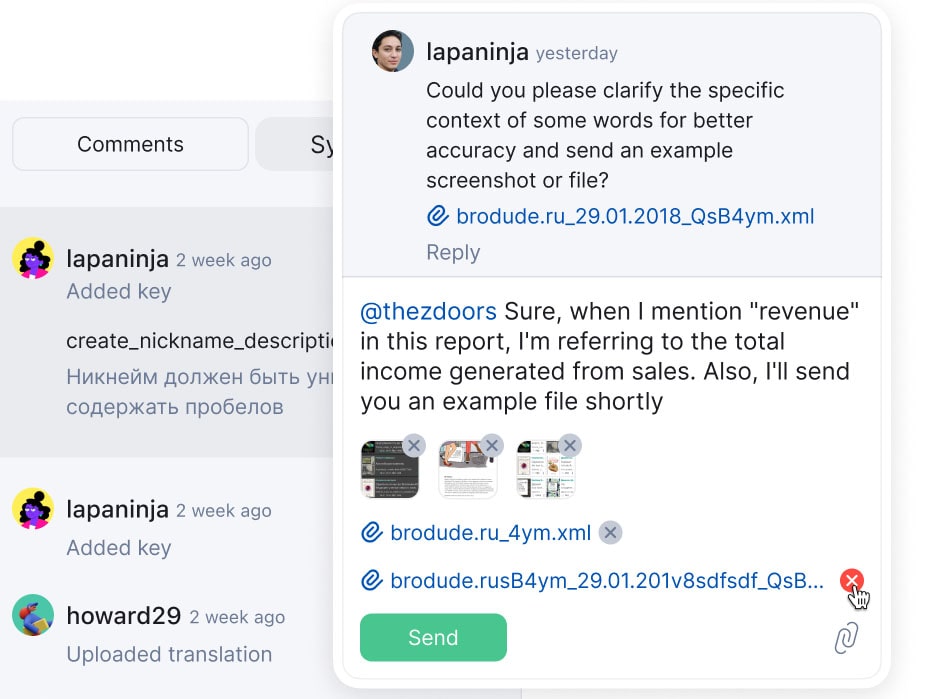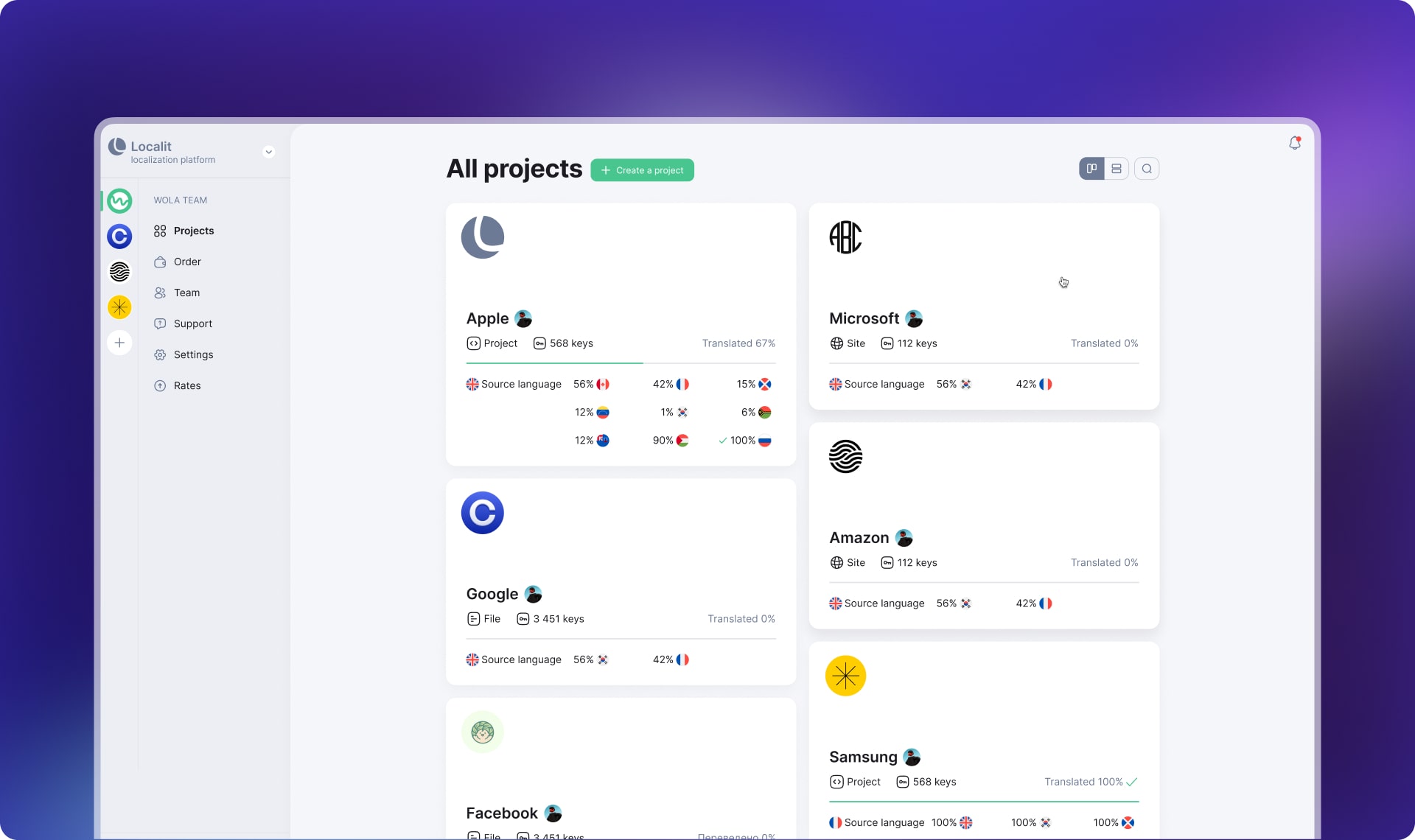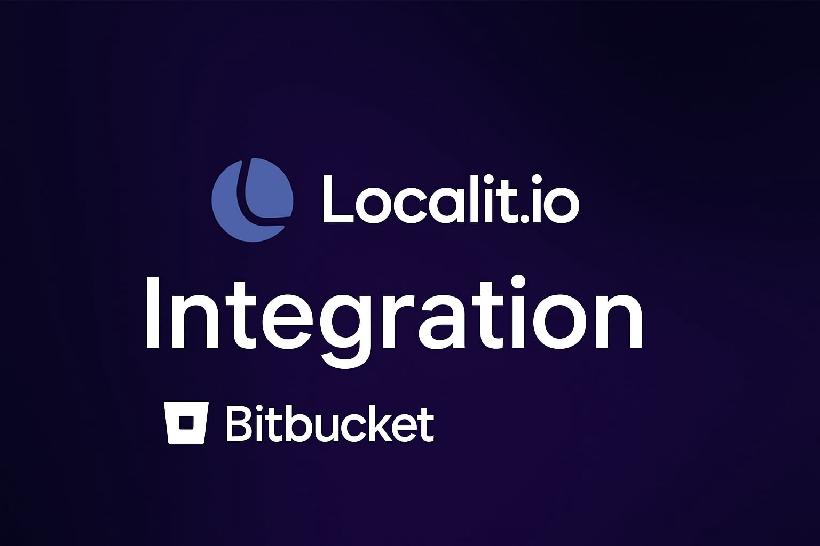Go global they said, it’ll be fun they said… Although true to some extent, expanding your business to new markets and audiences doesn’t always come easy and requires quite a bit of planning and effort. This also applies to arguably the most crucial part of internationalizing your company: localization. Unlike translation, localization is a much broader term that includes notions like cultural context, making sure your humor “translates” correctly, and switching to correct date formatting and measurement units.
Being quite a challenge even for seasoned and established businesses, localization can especially seem a very tall hill to climb for beginners. But worry not, Localit is here to simplify this process with our handy step-by-step instruction. So, read on to find out more!
Why Localization Matters for Global Businesses
Simply put, localization is essential in building strong connections with diverse markets. According to a study by Common Sense Advisory, 76% of online consumers prefer to purchase products in their native language, and 40% won’t buy from websites in other languages at all. These numbers clearly indicate that tailoring content, products, and experiences to local languages and cultural contexts can be a real dealbreaker for your global expansion. Without localization, businesses risk alienating potential customers and yielding market share to competitors who have been smart to invest in proper localization.
The financial benefits of localization are significant as well. Companies that localize see a return on investment (ROI) that can be as high as $25 for every dollar spent. Global giants like Airbnb and Netflix have achieved massive success by investing in localized strategies, allowing them to connect deeply with their international user base. As businesses expand, ensuring a seamless and culturally relevant experience for each market is key to driving revenue and gaining customer loyalty in diverse regions.
Always Plan Ahead
Planning ahead sounds like a very natural thing to do that you are aware of anyway, but trust us, this will help. Without a solid plan, your business runs the risk of delays, miscommunication, and cost overruns. Start by establishing clear goals, understanding the local market, and identifying the right resources and tools. A comprehensive plan will guide your localization process and ensure that everything—from translation to user experience—is adapted correctly for the target audience. This planning phase is where you define the scope of the project, set a realistic timeline, and align all stakeholders on the goals and expectations.
Some Things to Consider:
Target Markets: Research and select which regions or languages to localize for first, based on demand, your offers, and business strategy.
Clear Goals: What are you hoping to achieve with localization (increased market share, customer satisfaction, or brand awareness)?
Budget and Resources: Determine how much you’re willing to invest and whether you need external partners or in-house teams for the localization work.
Right Tools: Select localization software or translation management systems that integrate with your existing infrastructure. For example, Localit offers affordable comprehensive packages for localization. But more on that later.
Timeline: Create a realistic timeline for the project, ensuring that deadlines are manageable and aligned with your goals.
Step-by-Step Guide to Localization for Beginners
With the planning under your belt, you are now ready to move to our convenient and short guide of key localization phases.
1. Sign Up with the Right Localization Service
There’s no need to go this route alone! Your developers, translators, and managers will feel the difference when you introduce them to a handy translation management software (TMS), especially if it has built-in features for codes to work perfectly in adapting your online resources. The supply on the market is huge, so keep on eye on several particular features that will simplify your project.
Affordability
‘Nuff said, really. Go with software that aligns with your financial status! For example, Localit has a convenient range of subscription plans that will make sure your localization moves ahead at a steady pace with minimal costs. Take a look:
| - | Free Plan | Standard Plan ($9/month) | Business Plan ($30/month) | Advanced Plan ($90/month) |
|---|---|---|---|---|
| Description | The Free Plan is ideal for small teams or individual users looking to explore Localit’s core features. | The Standard Plan provides more flexibility for growing teams for $9 per month (when paid annually). | The Business Plan is tailored for larger teams handling complex projects for $30 per month (when paid annually). | The Advanced plan is designed for enterprise-level needs, providing robust support for large teams for $90 per month (when paid annually). |
| Features | 2 users per team500 translation keys for all projects100 MB storageIntegration with Google Translate for translations | 5 users per team5,000 translation keys for all projects10 GB storageGoogle Translate integration for translationsHistory tracking by keys | 10 users per team10,000 translation keys for all projects50 GB storageGoogle Translate integration for translationsHistory tracking by keysScreenshots for translation keys | 30 users per team30,000 translation keys for all projects100 GB storageGoogle Translate integration for translationsHistory tracking by keysScreenshots for translation keys |
Other services like Localazy, Smartling, and Lokalise cannot quite match Localit’s affordability, but will get the job done if you have resources and investments to spare.
Convenient Team Communications
A full-scale localization project requires a lot of communications between team members, and we mean it. Using around 3-5 different messengers and email services is a well-known headache for the localization industry. This inefficient system leads to dither and delay with deadlines constantly postponed and timelines not met.
Recognizing this, Localit developed a simple yet effective solution: built-in chats! Now your company can have all the communications in one spot. Send voice notes, screenshots, tag users, and more with immediate notifications. This is something that doesn’t really exist anywhere else on the market, come test it out here.

Processing Speed
Your localization project deserves modern conditions! Always test your chosen TMS for processing speed and how quickly it can process high volumes of information. Go for something that strikes a perfect balance between being fast and efficient.
Ability to Handle Multiple Languages at Once
Need your website in Hungarian, Chinese, and Zulu? Make sure to pick the right TMS that can handle this task. Localit offers 111 languages in total, all you need to do is just click a few times to complete the localization process.

Here’s what it looks like. Get in touch with us to learn more and try it out!
2. Products and Services First
When embarking on localization, focusing on your core products and services first is vital for gaining traction in new markets. Adapting these key offerings ensures that they resonate with local audiences, enhancing user experience and increasing the likelihood of customer engagement. According to Nimdzi Insights, 9 out of 10 internet users won’t consider a product if it’s not in their native language, underscoring the importance of localized offerings.
Beyond language, successful localization often involves tailoring features, packaging, and even functionality to meet the unique needs of each market. A study from the Localization Industry Standards Association (LISA) found that proper localization can reduce product launch costs by up to 50% and increase speed to market. Companies like Coca-Cola and Amazon, which have heavily localized their products and services, demonstrate how customization for local preferences can lead to higher brand loyalty and market share. Localizing your products and services first is not just about communication, it’s about making your offerings truly relevant and accessible to every user, in every region.
3. Translate and Localize Your Website and Brand Message
The next step is to make sure you are ready to become recognizable online with your website and message. This part is not just about converting text into another language, but adapting every aspect of your website and messaging to fit the cultural, linguistic, and functional expectations of each region. This process involves internationalizing your digital assets, translating content, and refining your brand message to align with local values and preferences.
Internationalization
Before translation begins, you need to internationalize your website. Internationalization (i18n) involves setting up your website infrastructure so it can seamlessly accommodate different languages and formats. This includes designing flexible layouts that can adapt to varying word lengths, supporting various character sets (such as UTF-8 for non-Latin scripts), and enabling right-to-left reading for languages like Arabic. Internationalization also prepares your site to handle region-specific data, such as date formats, currencies, and units of measurement, ensuring that the technical foundation of your website is adaptable for localization without needing significant rework.
Website Translation
Once internationalization is in place, the next step is translating your website content. However, website translation goes beyond word-for-word conversion. It involves considering local idioms, cultural references, and even the tone of communication. For example, humor or slang that works in one market may not be understood in another. By working with native-speaking translators or leveraging AI-driven localization tools, you can ensure the content feels natural to users in each market. Additionally, elements like SEO keywords must be localized to improve search visibility in each language, as search behavior varies widely across regions.
Brand Message
Your brand message is at the heart of your global identity. Localizing this message is critical to ensuring it connects emotionally with your new audience. This means not only translating your slogan or taglines but also adapting your brand’s voice and tone to reflect local values and cultural norms. For instance, while some markets may appreciate a bold, informal tone, others may expect more professionalism and formality. Localizing your brand message ensures consistency while making sure it resonates with diverse cultural expectations, ultimately building trust and loyalty in each region.
4. Don’t Forget about SEO and UX/UI
When localizing your website, don't let SEO and UX/UI get lost in translation—they’re essential for connecting with your global audience. Ignoring them would be like hosting a dinner party and forgetting to serve the food.
Search Engines
If your website isn’t optimized for local search engines, it’s like throwing a party with no invitations. Local SEO is key: use region-specific keywords, meta descriptions, and tags to ensure search engines know your content is ready to mingle with local users. Just remember, Google may rule the world, but don’t forget about Yandex in Russia or Baidu in China!
Here are five tools that will help you in this quest:
Google Keyword Planner
Helps you find relevant keywords, showing search volume and competition data for your SEO and PPC strategies.Ahrefs
Offers backlink analysis, keyword research, and competitor tracking, helping you improve rankings by analyzing your link profile.SEMrush
A tool that provides keyword research, site audits, and competitor analysis to enhance SEO and content marketing strategies.Moz
Provides SEO tools for link building, site audits, and rank tracking, plus the popular MozBar extension for real-time SEO metrics.Ubersuggest
A free keyword suggestion and competitor analysis tool ideal for smaller businesses or SEO beginners.
User Experience
Even if your content is perfectly translated, clunky navigation can send users running faster than a bad buffet. Keep the design simple, flexible, and intuitive. Users in Japan might love densely packed information, while Scandinavian audiences prefer minimalism. Tailor your UX/UI to suit these preferences, and make sure buttons, forms, and visuals are easy to navigate no matter the language or region.
5. QA and Testing
Testing and quality assessment are simply integral to your winning strategy. You don’t really want to end up on the “top 5 localization mistakes that will harm your business” article, do you? Here’s what to focus on:
Translation Quality
While you don’t need to be fluent in every language your content is translated into, ensuring accuracy is essential. This process involves two main steps: first, addressing any grammatical errors through automated tools or manual editing, and second, having a human (ideally a native speaker) review the translation. The final review focuses on more nuanced aspects, such as local spelling conventions and meeting the content team's specific requirements for tone and style.
Dates, Measurements, Currencies
Reviewing dates, measurements, and currencies is crucial to ensure the accuracy and consistency of localized content. Dates should be formatted according to the regional norms (e.g., MM/DD/YYYY in the US versus DD/MM/YYYY almost everywhere else), while measurements need to be converted appropriately (metric versus imperial systems). Currencies should also be localized, not just by converting amounts but by adapting symbols and decimal conventions to reflect local usage. Failure to do so can lead to confusion, mistrust, and a negative user experience, making these checks vital for high-quality localization.
IT side
From a developer’s perspective, testing localized content is all about ensuring that all technical elements function correctly across different languages and regions. This involves checking that language switches don’t break the site or app's functionality, confirming proper text expansion handling (especially for languages that require more space), and ensuring that date, currency, and measurement formats are displayed correctly. Additionally, developers need to ensure that the backend systems (like databases and APIs) can process and display localized data without issues. It's also crucial to test on various devices and platforms to ensure consistent performance and layout, especially for languages that require right-to-left text or non-Latin characters.
Localization Made Easy
Localizing your content doesn’t have to be an overwhelming task. With the right planning, resources, and strategy—like the one laid out in this guide—you’ll find that the process can be quite straightforward. The key is thorough research and careful testing. By following these steps, you’ll be well on your way to delivering a seamless and culturally relevant experience for users around the globe.
To make the process even easier, consider using a translation management service like Localit. This AI-driven platform is designed to simplify your localization workflow, offering high-speed processing, built-in communication tools, and flexible pricing. Whether you're a small business or a startup, Localit ensures quality translations without breaking the bank—making global expansion a breeze! Try it here or get in touch to learn more about the software and us!

 Bitbucket Integration: Complete Guide to Automated Localization Workflow
Bitbucket Integration: Complete Guide to Automated Localization Workflow ChatGPT-5 Now Available in Localit.io
ChatGPT-5 Now Available in Localit.io Everything You Need to Know about Mobile App Localization: Challenges + Best Practices of Working in a Different Language
Everything You Need to Know about Mobile App Localization: Challenges + Best Practices of Working in a Different Language